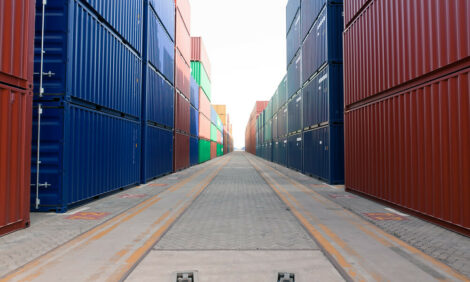



China's Pig Industry Enters Mature Phase
CHINA - After three decades of rapid development, the country's pig industry has entered the mature stage, according to a recent report.After 30 years development, China's pig industry has entered the mature stage, the domestic per capital possession amount of pork has exceeded the world average. The pig industry has basically ended a period of rapid growth, according to a report entitled China pig Industry Market Research 2009 published by Research and Markets.
The development of competition of pig industry has in a stage of scale, characteristic cultivation and brand. At this stage, disease control, price risk management and meticulous management are the foundation of competitiveness. Build up a brand is the core of competition of differentiation, the ideal development is to form a fully industry chain with feed, cultivation, breed, slaughter and sale. In terms of the development of pig industry in the past 30 years, in every economic cycle, the pig industry always carry out an industrial upgrading. In the next 10 years, the pig industry will be into a stage with industrial scale and brand.
Pork price always reflects the level of feed grain prices, labour costs and general inflation, or even more sensitive than consumer price index (CPI) to reflect price level. Since 2000, pork price has been continued rising, the domestic inflation has been rising faster.
During 2000-2003, the price of pork was 10 yuan (RMB) per kilo with relative stability; 2004-2006 was RMB13 per kilo, an increase of 30 per cent with moderate inflation; 2006-2008 was RMB20 per kilo; since the second half of 2008 until now, although the price of pork call-back quite sharp, but the pig industry is still in loss. However, the overall level of pork price is still high, a long-term trend is still in a downward trend from the peak time.
In terms of regional resource advantages and development status, government chooses some traditional areas such as the coastal areas, north-east areas, central areas and south-west areas in 19 provinces to establish 437 pig breeding bases. By 2015, the total number of slaughter pigs will reach to 400 million in those bases, an average annual increase of 3.4 per cent; pork production reach to 32.4 million tons, an average annual increase of 3.5 per cent. Among them, the proportion of large-scale breeding to achieve 65 per cent or more; pig slaughter rate achieve 150 per cent or more; each pig for meat yield annually will reach 120 kg. Creating a healthy stock breeding system, as well as the supply capacity of boar meets the production needs. The sales from these bases to other consumer areas will reach 240 million pigs, accounting for 60 per cent of the total slaughter amount; the export of pig products will grow to 80 million tons.
In general, government policy can be divided into two categories: one is called 'essential functions' policy including five main policies: the monitoring of basic information and release, disease prevention subsidies, disease pigs slaughtered, subsidy of slaughter link of harmless disease treatment, use of government pig reserves to regulate short-term market fluctuations.
The second category is 'strengthen and promotion' policy. These policies include: breeding sow insurance and subsidies, reward for large pigs base for transferred out, subsidies for pig semen, and support standardisation of the size of farm infrastructure. These policies are mainly aimed at the development of China's live pig production problems, such as low level of scale and standardisation, seed rate is not high, instability of development. These policies are necessary and will remain long-term stability.
Further Reading
| - | You can view the full report (fee payable) by clicking here. |








